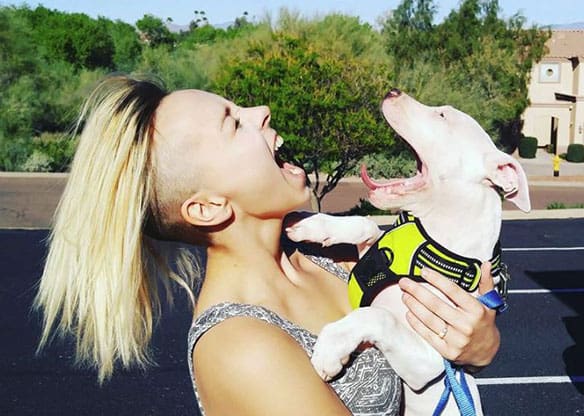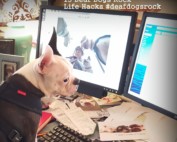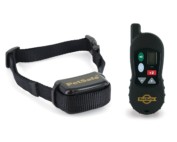From Christina: I have been sending out the following information in emails and private messages to new deaf dog families since 2010 so I thought I would share it with all of you. Please consider sharing this link with anyone you know who has a deaf dog or has just adopted a deaf puppy. Also, if you know of a shelter who has a deaf dog, be sure to send this link to them so they will understand a deaf dog is not that much different than a hearing dog. We do not consider deaf dogs disabled or their lack of hearing a weakness. Many deaf dogs go on to be therapy dogs and some even work in correctional facilities because their lack of hearing is a strength as they are not anxious from the loud noise like a hearing dog would be.
I also did a video to go along with this post. I hope this information helps you in your journey to help your deaf dog become the best dog he can be. You and your deaf dog are a team and it is your job to be your deaf dog’s advocate.
Happy training! ~ Christina Lee – Deaf Dogs Rock
What Every Deaf Dogs Family Needs To Know by Christina Lee – Founder of DeafDogsRock.com
The very first thing to consider in regards to your deaf dog or puppy is that your deaf pup is: A dog first, breed second, and deaf third. We only promote and use positive reinforcement (+R) clicker training methods to give each deaf dog an opportunity to make the right choice and support that choice by marking the choice with a marker, followed by treating the dog with a high value reward. Positive reinforcement training is basically the same with a deaf dog as it is training a hearing dog (with the exception of using visual commands and markers verses verbal commands and the should of a clicker).
Many new deaf dog families feel they must find a dog trainer who specializes in training deaf dogs. You don’t need a “deaf dog trainer” because the training classes are to train you to train your dog. The only difference is with training a hearing dog a person would give the dog a vocal command (with a deaf dog you give a visual sign), that a person would lure the dog into place with a high value treat (same with a deaf dog), when the dog does what is asked, the handler would normally click a clicker to mark the correct response from the dog at the exact second the dog makes the right choice. With a deaf dog we mark the exact second the deaf dog makes the right choice by smiling and giving the dog a thumbs up sign as a marker. After we use the visual marker, we follow up by giving the dog HIGH VALUE treat as a form of currency to reward the dog. Than we repeat, repeat, repeat. So the only difference is using a visual command vs. a verbal command and using a visual marker vs. the sound of a clicker to mark the correct behavior from the dog. With a deaf dog the dog must be looking at you to be able to give the dog a visual command so we always practice Watch Me training often.
We don’t use any special trainers. The trainer is to train you and keep you accountable and on track with training your new deaf dog or puppy.
I can’t tell you how important Positive Reinforcement Group Puppy Training and Obedience Training is to building your deaf dog’s foundation for a happy life. I was spending almost $200 a month on Star Bucks and I gave it up so I could take each one of my deaf dogs to training. We highly recommend that if you have adopted a deaf puppy it is crucial to sign up for Positive Reinforcement Group Puppy Classes so your puppy will be well socialized and so that you will stay on track with your deaf puppy’s training. Prices for a group class run anywhere from $150 to $250 (for training weekly running from 6 to 8 weeks time). Puppy and dog training classes will keep your deaf dog socialized. If you decide to continue like I did taking all the upper level classes you can work on neutral dog greeting, neutral people greeting, work on touching your dog’s ears, paws and teeth to get them accustomed to a groomer or vet touching your dog. You might even consider working on passing your Canine Good Citizen Test like Nitro did at 10 months. Now I can take him anywhere. Nitro is so well behaved he can attend conferences with me and he even goes to all my sessions (he lays down and goes right to sleep). To learn more about how to find the right trainer, please click here.
Probably the biggest advantage of going to training classes is to keep YOU on track with your deaf dog’s training to help your deaf dog build a solid training foundation so you are helping your deaf dog be the very best dog he can be. Belonging to a training group and working with a trainer you will also have someone to talk to if you run across specific challenges with your deaf dog. Having that kind of training support is CRUCIAL in raising a deaf dog.
If you have a new deaf puppy that is very mouthy and bites hard be sure to read our Bite Inhibition/Leave it/Gentle training post here.
Since so many deaf dogs and puppies are dumped at shelters across the country we want to address Separation Anxiety or S.A. Deaf Dogs Rock hears from shelters who get in deaf dogs who have extreme S.A. and the previous owners just give up and dump them at a shelter. In reality it is not the deaf dog’s fault if the dog has S.A. it is usually from the previous owners feeling sorry for the dog, sleeping with the dog and always giving in to the dog when the dog cries.
With Potty Training your new deaf puppy should be taken out every hour (when possible). The puppy should be attached to a leash at all times so you can tap the puppy on the shoulder, give the sign for “go potty” and wait. Once the puppy has gone, then and only than can the puppy come off the leash as a reward to explore). Read more about potty training here.
Because separation anxiety is life changing for any family, it is very important to understand how sleeping with your puppy can cause separation anxiety. All deaf dogs are different. Some breeds might be more prone to S.A. than others but please try your best not to sleep with your puppy and make proper crate training your highest priority. Crate training done right will lead to a happy deaf puppy who views his crate as his private den and looks forward to having meals, taking naps, and going to bed in the crate. If you don’t do your research on crate training, and you do it wrong the dog will hate the crate which will make it very hard for the family to leave home. If you can’t if safely crate your deaf dog, how will you be able to keep the dog from getting into things around the house that can be harmful or deadly? The reason it is so important is new deaf dog families make the mistake of sleeping with their puppies and just giving up on crate training so when the puppy screams and cries they give in and put the puppy in bed which in the long run may end in severe S.A. Once the pup gets separation anxiety, the normal life as the family knows it will be gone forever and trust me when I say “a deaf dog with S.A. is a huge challenge”.
If you go to our Resource section and go to the training blog please consider studying Crate Training and Potty Training.
Also it is crucial you are aware that laser lights of any kind can trigger Canine Obsessive Compulsive Disorder in a deaf dog (and in a hearing dog). If your deaf dog already has OCD behaviors like always looking at the ground, shadow pouncing, or chasing light reflections from a laser light, please read this post and watch the redirection videos here.
Below are some of our top teaching links on our Training blog:
- Beginning Sign Training
- Teach Your Deaf Dog the “Watch Me” Cue
- Tether Training Your Deaf Dog
- 15 DDR Life Hacks for Deaf Dog Families
- Positive Reinforcement Deaf Dog Training ROCKS
There are also several really good posts here: http://deafdogsrock.com/category/training-tips








